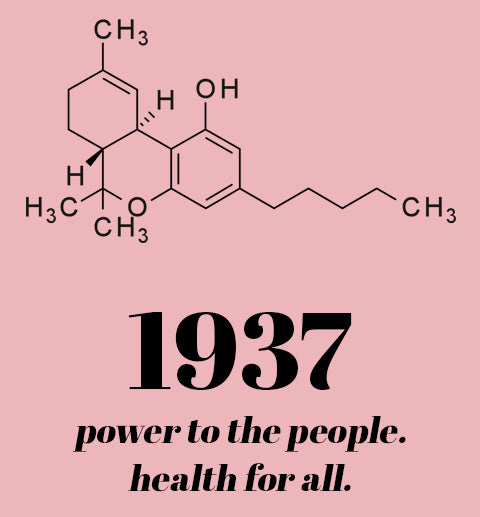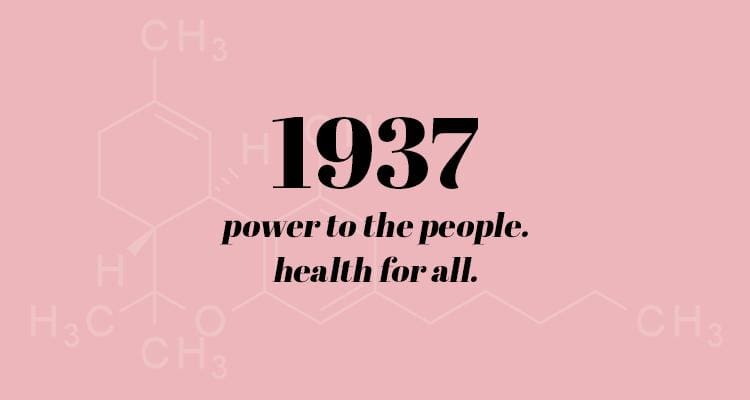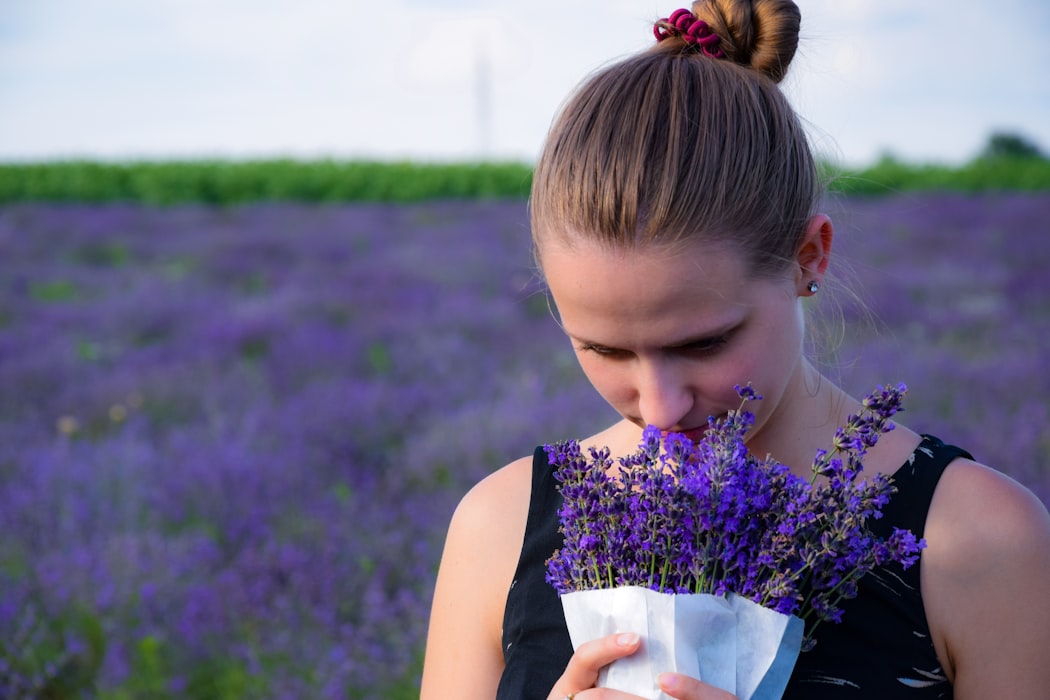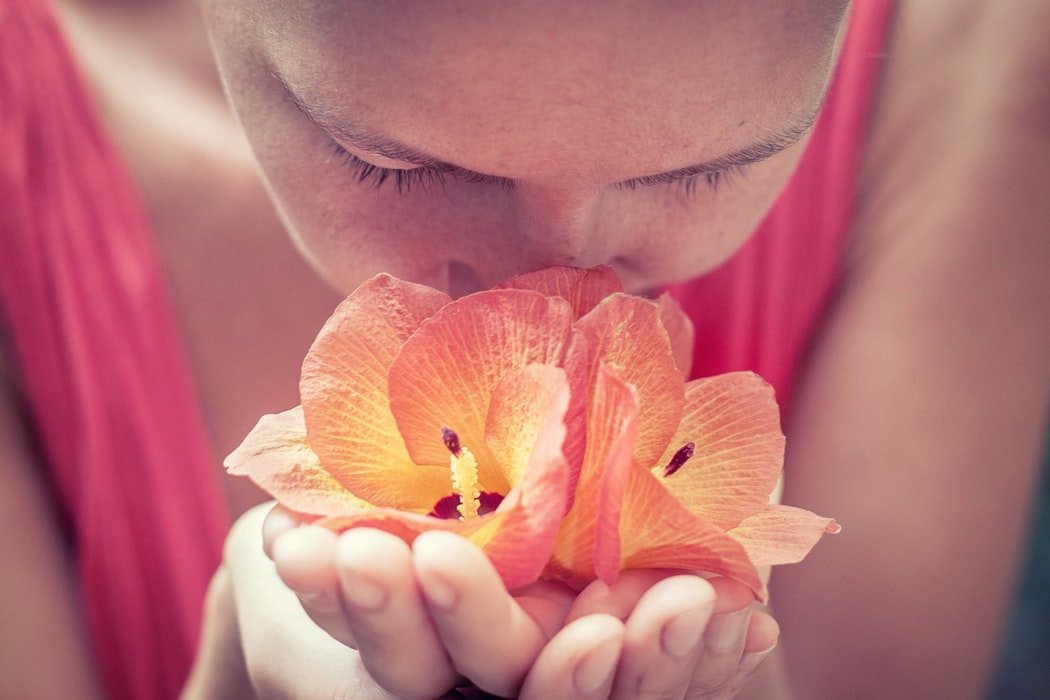What Are Terpenes and What do They Have to do With CBD?

The new buzz word in the CBD community is “terpenes.” But what exactly are they and what do they have to do with your CBD products?
If you’re like me, you’re a little obsessed with cannabidiol (CBD). Or maybe you’re just now getting into it and you’re doing some research to see what it’s all about. Either way, by now you’ve probably come across the term terpenes more than once.
But what ARE terpenes and why should you care? Some people are saying that they’re just like essential oils, which is both correct and incorrect. While they do have aromatic benefits, like essential oils, I wouldn’t recommend dabbing them on your wrists like perfume.
The truth is that there are terpenes in almost every plant and in some insects. Have you ever smelled a rose to get a whiff of its delicate scent? That aroma is from terpenes! How about the bright citrus smell from lemons and oranges? Yep, those are terpenes too.
In the simplest sense, terpenes are responsible for creating so many of the aromas you’re most familiar with. But what’s even more interesting is that there are terpenes naturally present in the hemp plant that CBD is manufactured from. And those terpenes can have some interesting effects.
What Are Terpenes?
Let’s just start by saying that terpenes are organic compounds. So they’re completely 100% natural. They’re what imbue plants with specific aromas and tastes, and they can also be used in aromatherapy.
Terpenes have a LOT of benefits. For example, most of us are familiar with some form of calming lavender lotion or bath soak. You might say that certain smells are associated with certain moods. That’s because some terpenes have calming, euphoric, or even arousing effects.
Outside of their mood enhancement potential, some even have medicinal benefits. Certain aromas have been used for centuries to lessen anxiety, or as antifungals and anti-inflammatories. Those medicinal properties are, in part, from terpenes!
While terpenes aren’t necessarily new, technology today has made it possible to isolate specific terpenes so they can be more readily studied and used commercially. By now you might be wondering just how does someone acquire a terpene? Can you make your own in your kitchen with plants from your garden? Technically, yes. But it would involve more equipment than the standard kitchen usually comes with.
Essential Oils vs. Terpenes
Remember earlier when we talked about essential oils? Essential oils ARE closely related to terpenes, but they’re not quite the same. First, the name “essential oils” is a bit misleading.
These oils are not essential to the human body, but they’re often called that because of the extraction methods needed to acquire them. To get essential oils, they’re taken from raw plant materials using one of several different extraction methods.
In the past, steam distillation was the method of choice, but today there are quite a few more options. As technology advances the list of extraction methods will continue to grow. But it wouldn’t be surprising to see oils that were extracted using CO2 extraction or even cold-press extraction.
For the longest time, essential oils were considered the purest essence of a plant's taste or aroma. But these oils are actually a combination of several different compounds, including an entire profile of terpenes. So each essential oil contains several different terpenes.
That’s why the two terms are so closely related. To get terpenes, you have to continue distilling an essential oil until you’ve separated all of the other compounds. If done properly, you’re left with are those beautiful little terpenes.
Are There Terpenes in CBD?
It's possible, and it all depends on the type of CBD you’re using.
CBD is extracted from the hemp plant. Hemp contains a series of terpenes, CBD, and the tiniest amount of tetrahydrocannabinol (THC). Depending on the type of product someone is trying to make, your oils or edibles may or may not contain all of those compounds.
When you see a CBD product that says Full-Spectrum or Whole Plant that means they’ve used the entire plant. So you’ll get CBD, terpenes, and a minuscule amount of THC (like seriously you’ll never notice the THC). Broad-Spectrum CBD means that all of the compounds are present except THC. And, of course, a CBD isolate means that the only part of the plant that’s included in that product is the CBD and nothing else.
For those worried about drug testing or particularly sensitive to other cannabinoids, isolates make the most sense. But for those who want to reap as many benefits as possible, the Full-Spectrum and Broad-Spectrum products can provide a bit more. They do this through a phenomenon called the Entourage Effect.
The Entourage Effect
In 1998 Professors Mechoulam and Ben-Shabat proposed the idea that the endocannabinoid system (ECS) functioned better when it was exposed to several different cannabinoids at once. Their idea was that when exposed to an “entourage” of compounds, the ECS reacted by creating even more natural endocannabinoids. And that, my friends, is a very good thing!
When your ECS is functioning properly, it promotes balance in several other systems throughout your body. You might notice a more regular sleep cycle, balanced hormones, and lessened anxiety. But was their idea right?
Since their proposal, there’s been LOTS of research. Their idea was supported in one trial attempting to compare the efficacy of opioids and cannabinoids for pain management. When compared to the placebo group, THC alone didn’t do much. But once THC and CBD were utilized together, the results were significantly better than the placebo group AND the THC group.
Another study showed that over time, CBD users can end up needing more and more CBD to produce the same desired effect. This is called a “bell-shaped dose response.” However, once a full-spectrum product was administered, as opposed to a CBD isolate, that bell-shaped dose response diminished. This meant that patients didn’t need to keep upping their doses to achieve results. I’d call that a win any day!
But what does the Entourage Effect have to do with terpenes? Remember when we said that you’ll get the most benefits from using Full-Spectrum and Broad-Spectrum CBD products? That’s because both of those options still have terpenes in them, and terpenes contribute to the entourage effect.
So while you won’t get the addition of THC in the Broad-Spectrum options, you’ll still get the benefit of combining CBD and terpenes. And if you decide you want help from the whole gang, you can choose to use Full-Spectrum products. That way the CBD, THC, and Terpenes are all working together synergistically.
How Terpenes Work
Because of the controversial nature of cannabis research, we’re just now starting to focus on the strange and scented world terpenes. For chefs and bartenders, it opens up a vast array of tools to influence the subtle nuances of their art. For individuals who are just looking for the best way to find temporary relief from minor ailments, terpenes offer a unique solution.
Terpenes affect the same brain receptors that cannabinoids do. They can even influence the number of cannabinoids that reach the brain via the blood-brain barrier. But whenever they interact with receptors, their influence can be felt in many different ways.
Some terpenes help us relax and others stimulate us. Sometimes they even have anti-inflammatory or analgesic effects. And they're in lots of everyday products.
Sometimes it’s something as subtle as having a calming cup of chamomile tea before bed. Oftentimes people will say that they feel more awake just by smelling a cup of coffee. The point is, terpenes aren’t new. And neither is combining terpenes with CBD.
Some people will even eat a ripe mango before using cannabinoids. While they could just be doing it because mangos are delicious, it’s also because mangos have the terpene Myrcene in them. The theory is that Myrcene works synergistically with the cannabinoid to have a different effect than either would have had on their own--aka the entourage effect.
So Terpenes Are Good?
Very good! But if you have allergies or sensitivities that limit you to just using CBD isolates, then there’s nothing wrong with that. As always, use whatever products work the best for you.
We challenge you to start thinking about all of the different aromas that you come across throughout your day. Does spearmint gum help you focus before a big test? Do you always spritz on your favorite vanilla body spray before a date to help you feel sexy? Terpenes are seriously all around you!
While we always recommend consulting with a doctor, there’s no denying that these compounds can offer temporary relief for minor issues. And every day there’s more and more research being done to find out whether they’re suitable as therapies for more serious ailments too.
Let us know in the comments what your experience with terpenes has been like! And don’t forget to give us a shoutout on social media for a chance to be featured here or on our Instagram.

Hannah Walker is a mostly-retired University English instructor who spends her time freelance copywriting. When not doing that, she’s writing articles related to CBD, skincare, and/or media. With an MA in English-Creative Writing she’s probably working on a creative piece at this very moment. See more about Hannah’s work on her website or on Instagram.





